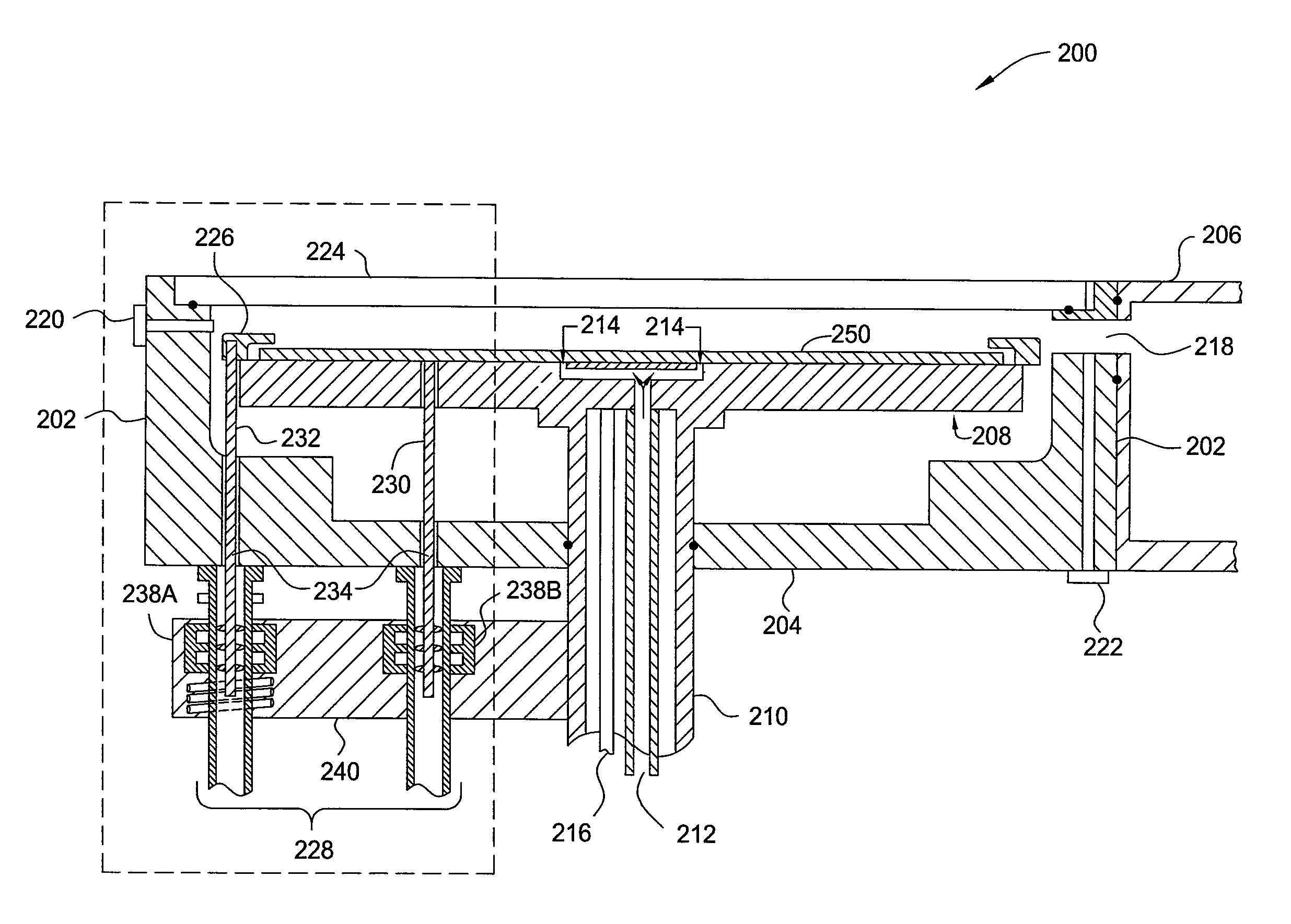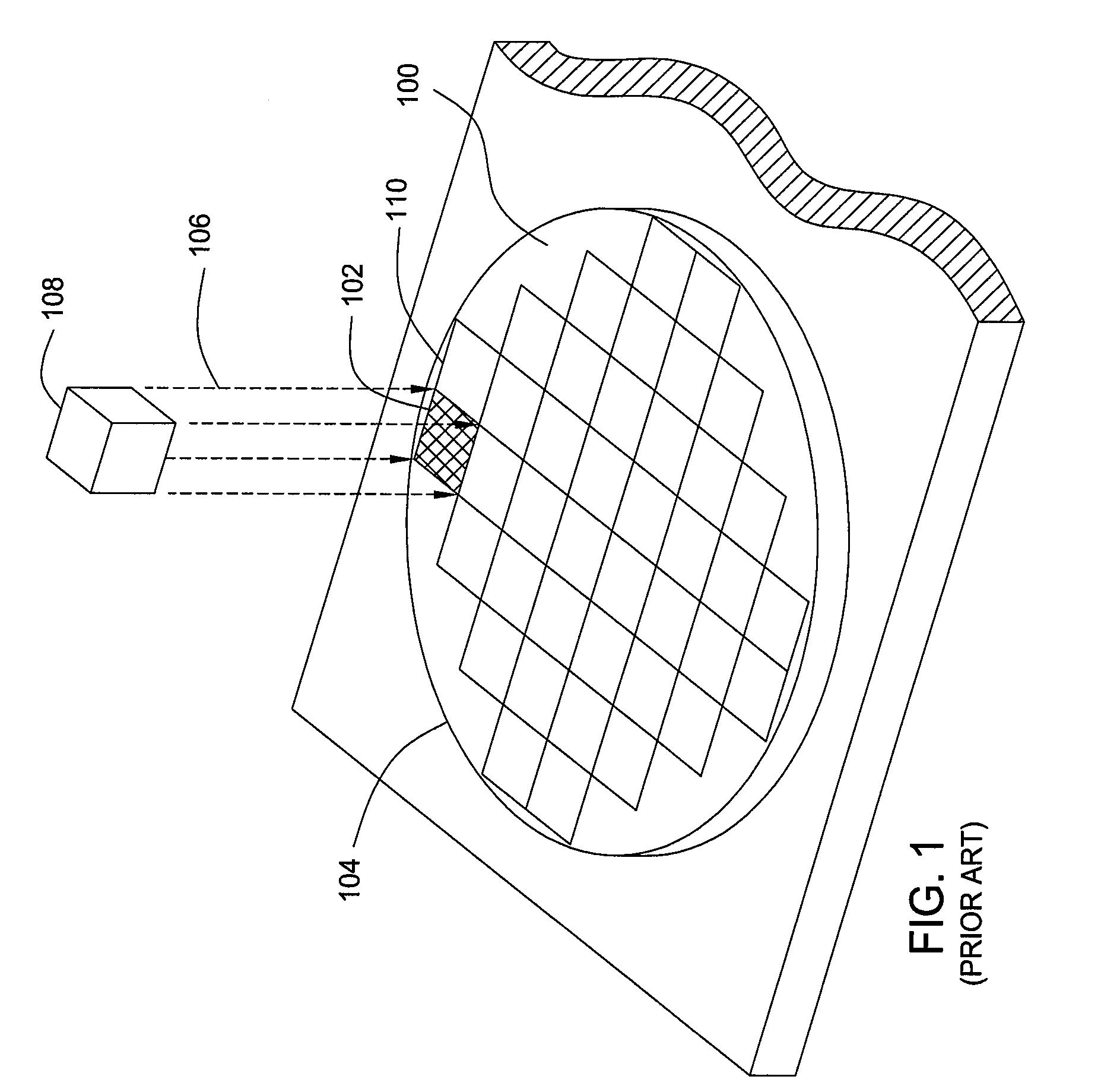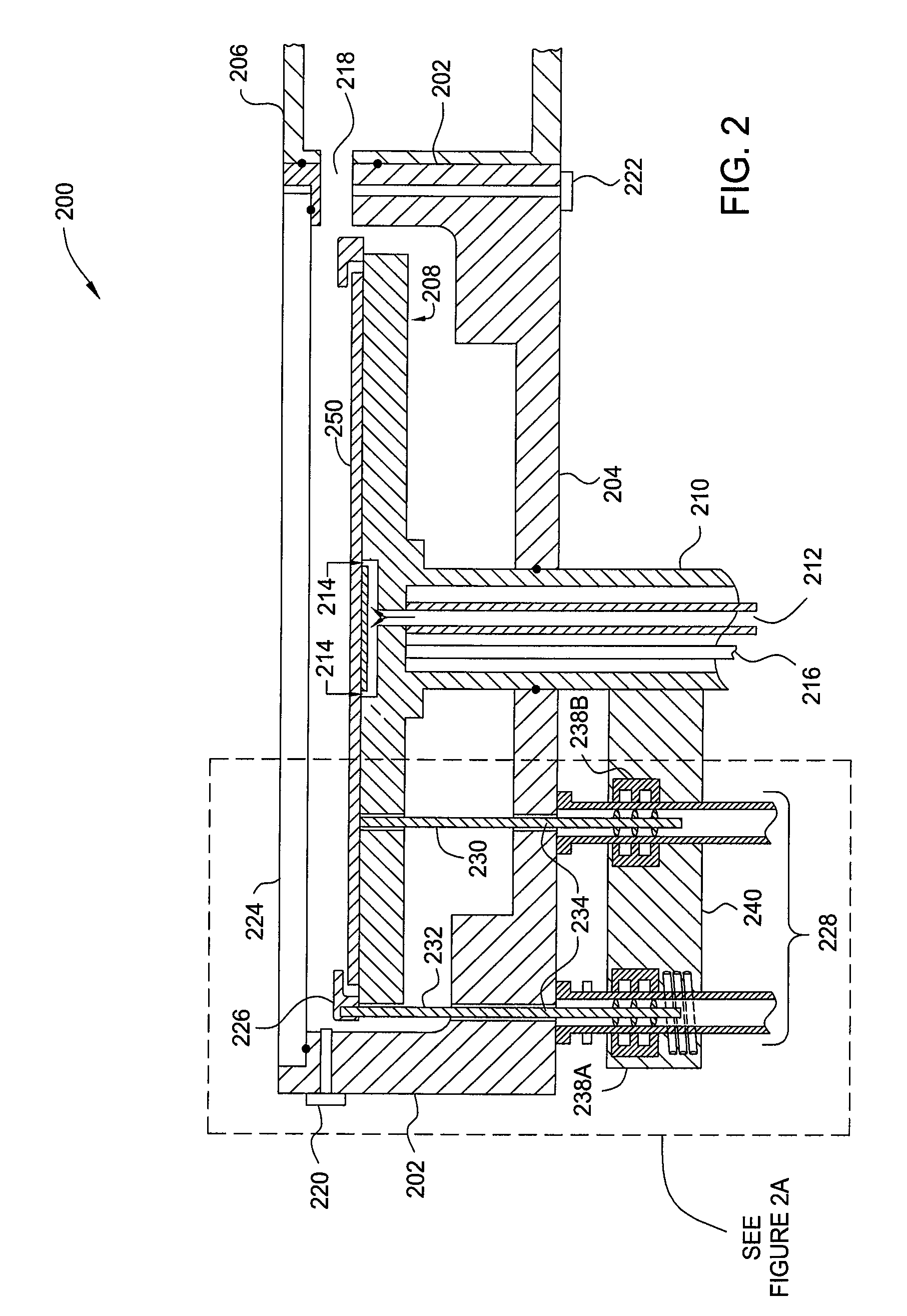Millisecond annealing (DSA) edge protection
a technology of dsa and annealing, applied in the direction of manufacturing tools, metal-working machine components, semiconductor/solid-state device manufacturing, etc., can solve the problems of limiting the speed at which one can heat and cool the substrate, the only way to achieve heat dissipation into the surrounding space or structure, and the current state of the art rtp system cannot achieve a 400° c./s ramp-up rate and 150° c./s ramp-
- Summary
- Abstract
- Description
- Claims
- Application Information
AI Technical Summary
Benefits of technology
Problems solved by technology
Method used
Image
Examples
Embodiment Construction
[0022]Embodiments of the present invention provide an apparatus and method for thermal processing of a substrate. In a process chamber configured to perform thermal processes involving directing electromagnetic energy toward at least a portion of the surface of a substrate, a device is deployed to block at least a portion of the electromagnetic energy from reaching the substrate. The device is configured to allow insertion and removal of the substrate by any of several means, and is made to withstand the conditions present during processing of the substrate.
[0023]FIG. 2 is a cross-section view of a thermal processing chamber 200 according to one embodiment of the invention. Chamber 200 features a wall 202, a floor 204, and a top portion 206 cooperatively defining a processing chamber. The processing chamber contains a substrate support 208 for positioning a substrate in the chamber. The substrate support 208 includes a conduit portion 210, which pierces floor 204, for carrying vario...
PUM
| Property | Measurement | Unit |
|---|---|---|
| temperature | aaaaa | aaaaa |
| thick | aaaaa | aaaaa |
| thickness | aaaaa | aaaaa |
Abstract
Description
Claims
Application Information
 Login to View More
Login to View More - R&D
- Intellectual Property
- Life Sciences
- Materials
- Tech Scout
- Unparalleled Data Quality
- Higher Quality Content
- 60% Fewer Hallucinations
Browse by: Latest US Patents, China's latest patents, Technical Efficacy Thesaurus, Application Domain, Technology Topic, Popular Technical Reports.
© 2025 PatSnap. All rights reserved.Legal|Privacy policy|Modern Slavery Act Transparency Statement|Sitemap|About US| Contact US: help@patsnap.com



